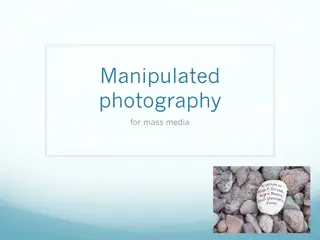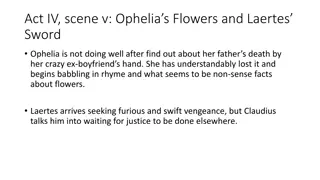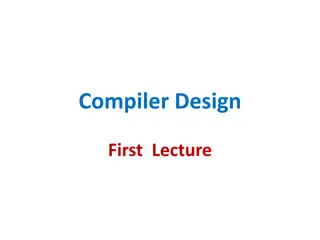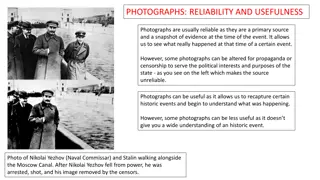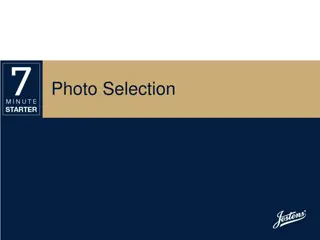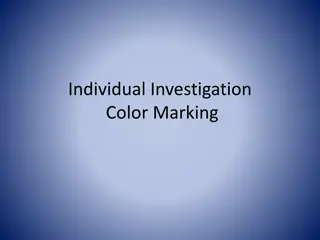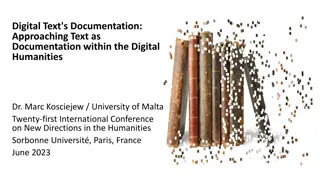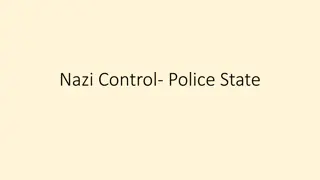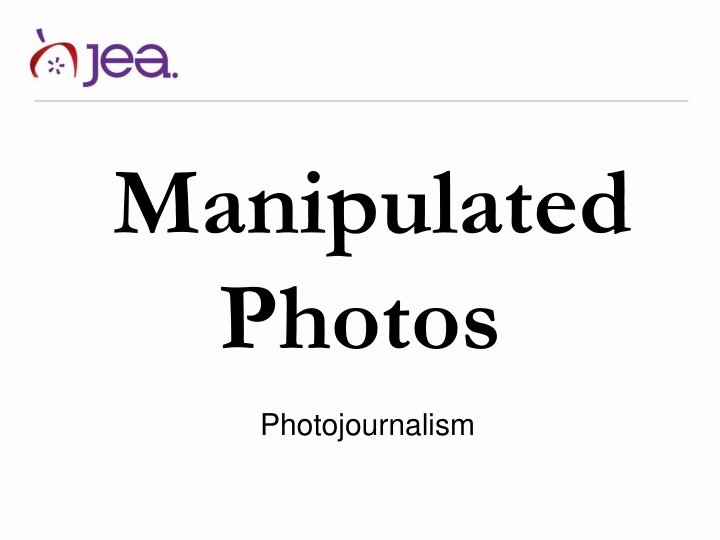
Photography Editing Policies and Ethics in Media Industry
Explore the strict editing policies and ethical guidelines followed by renowned media organizations like National Press Photographers Association, Associated Press, New York Times, and USA Today to maintain the integrity of photographic images and uphold journalistic standards. Learn about the limitations and acceptable practices in photo manipulation, color correction, and retouching to preserve the authenticity of visual storytelling.
Download Presentation

Please find below an Image/Link to download the presentation.
The content on the website is provided AS IS for your information and personal use only. It may not be sold, licensed, or shared on other websites without obtaining consent from the author. If you encounter any issues during the download, it is possible that the publisher has removed the file from their server.
You are allowed to download the files provided on this website for personal or commercial use, subject to the condition that they are used lawfully. All files are the property of their respective owners.
The content on the website is provided AS IS for your information and personal use only. It may not be sold, licensed, or shared on other websites without obtaining consent from the author.
E N D
Presentation Transcript
Manipulated Photos Photojournalism
National Press Photographers Association Editing should maintain the integrity of the photographic images' content and context. Do not manipulate images or add or alter sound in any way that can mislead viewers or misrepresent subjects.
Associated Press photo editing policy The content of a photograph will NEVER be changed or manipulated in any way.Only the established norms of standard photo printing methods such as burning, dodging, toning and cropping are acceptable. Retouching is limited to removal of normal scratches and dust spots. Serious consideration must always be given in correcting color to ensure honest reproduction of the original. Cases of abnormal color or tonality will be clearly stated in the caption. Color adjustment should always be minimal.
New York Times photo editing policy Images in our pages, in the paper or on the Web, that purport to depict reality must be genuine in every way. No people or objects may be added, rearranged, reversed, distorted or removed from a scene (except for the recognized practice of cropping to omit extraneous outer portions).
USA Today photo editing policy We do not alter any photograph, electronically or otherwise, to change the content, and we should be very careful about color correcting or any other potential alteration. (According to a memo from the 1989 managing editor for photography)






